







Page 15
Junior Ella Grant watches the time go by. Read more about students’ perception of time on pages 14-17. Photo by Anjali Kambhampati.
STAFF WRITERS
Lilly Copeland
Cash Durbin
Jack Hancock
Josie Jones
Lauren Kopitas
Sydney Kort
Hannah Markiewicz
Clara Resende
Paul Struby
Q Wallace

SOCIAL MEDIA EDITORS
Addi DeVore
Anna Sandage
DESIGN EDITOR
Emmett Abar
PHOTO EDITOR
Alex Robertson
WEB EDITORS
Addi DeVore
Sejin Hahn
We’ve all been here: endlessly scrolling through the social media page. One minute turns to two, two minutes turns to three, and by the time we’ve resurfaced, the clock has raced hours ahead. Then again, we’ve all been there: sitting in the classroom, intensely watching the second hand move agonizingly slowly. Tick tick tick — one second passes, and a millennia later, another finally goes by.
Technology has brought many gifts, including the ability to connect people across various generations and regions. But busy social media feeds can also give an overwhelming amount of bite-sized content. Thirty-second videos add up quickly while playing to short attention spans, making us feel like barely any time has passed at all.
Psychology shows that this trend isn’t completely in our heads. According to a study at Texas A&M University, students thought lectures lasted longer than the seven-and-a-half-minute runtime. They also felt like less time had passed while watching a video on social media.
This isn’t just a short-term issue. Constant exposure to videos, school work and world events has helped make
years fly by.
As seniors, these effects are magnified. We are frequently left to wonder, how did we get here already? Opening Zoom on our computers or walking into BVN for the first time as freshmen feels, at times, like it only happened a month ago. The last few years have been filled with classes, standardized tests, applications, stress, new friends, sports, dances and more. With so much happening nearly all the time, it’s easy to only remember the milestones and forget how much time has actually passed.
Such a time jump seems like a common phenomenon for this age group, yet the pandemic has left its mark on the class of 2024 specifically. With masks, constantly changing schedules and the continuous promise of the unknown, the idea of a “normal” start to high school was a relic of the past. The time spent doing next to nothing made the year a hard-toremember blur, and the traditional four years felt more like three.
Whether the pandemic disrupted our normal schedules — which had, for better or for worse, defined our sense of time for years — or a heavy use

COPY EDITORS
Stella Ain
Ruby Bierman
Madi Garrelts
Anjali Kambhampati
EDITORS-IN-CHIEF
Alegria Aguilera
Lexi Newsom
PODCAST HOSTS
Jack Hancock
Anna Sandage
of social media shaped how we read the clock, people are perceiving time differently. The centerfold of this issue tracks this phenomenon and seeks to understand why time has felt so weird lately for BVN students.
We hope you, our readers, will take a moment to reflect on your own sense of time. What makes the clock tick faster for you?
Sincerely,
The North Star editors




Do students think there is worth in award shows?
By Ruby BiermanAs award show season has begun, students have taken stances on the award shows they enjoy watching. Favorite award shows include the Emmys, Grammys, Oscars and Tonys.
Senior and broadcast student Triston Schelstrate said award shows provide the public with an interesting chance to see familiar pieces of media awarded on the big stage. The 2022 film “Everything Everywhere All At Once” winning last year's Best Picture award at the Oscars meant a great deal, Schelstrate added.
“I think it's cool to see … stuff that [viewers have] seen, and they get to be … like, ‘Oh, other people actually do care about this movie. It's not just me,’” Schelstrate said. “And [Everything Everywhere All At Once winning] was a really big turning point for me. It won a lot of awards, and it was really cool to see. I think that's a good reason that people enjoy watching [award shows] because they get to see stuff that represents not only stuff they like but also who they are.”
Senior Sophie Munro said award shows also provide a chance to recognize the work of those in the industry.
“I think [award shows] bring everyone — editors, producers, directors, actors, actresses — everyone together, just to recognize everyone's hard work,” Munro said. “I honestly think sometimes movies and TV shows can go unnoticed, and then they get an award. Then I think a lot of people want to go watch them. They’ll be encouraged to go watch them. So I think [award shows are] good because they recognize everyone, and they’re a fun get-together.”
In recent years, award shows have seen record low viewer turnout across the board. The Emmy Awards saw the lowest ever viewership in the ceremony’s history in 2021, according to Nielson data. Despite lowering viewership, Schelstrate said there is still value in award shows.
“I think [award shows] are important because it kind of shows the value of the art that people are looking at,” Schelstrate said. “We tend to go to movies as recreation, but it also kind of shapes our lives a little bit. The media we watch shapes our lives, so giving recognition to the people who helped build people's lives [is important] because some people will look at the movie as something that defines their
life for a long time. So I think giving recognition is very important.”
The worth of award shows can largely be measured with viewership, but it can depend on the award show, senior Bibi Igbaseimokumo wrote in a direct message.
“I would say there is not much worth in award shows depending on the award show, as many have seen that this year, the Grammys are a little bogus,” Igbaseimokumo wrote in a direct message. “But I think the Oscars is a good one. I also love the Tonys and BET awards.”
Munro agreed that the recognition award shows give makes them worth it.
“I think all the actors, actresses, singers, songwriters and whoever else, like producers, and all the behind the scenes people deserve recognition and stuff for what they do,” Munro said. “I do think there’s lots of worth behind it, but some people may not see that as much as others.”
Historically, award shows use boards of those in the industry to vote on nominations and winners. However, some awards, such as the People’s Choice Awards, allow for the general public to vote and rely on public opinion. A balance of the two is
necessary, Munro said.
“The People’s Choice Awards are good because that’s when the people can vote, but I do think it should be up to the academy just because they know what to look for, who to look for, all of that, so they have a good take on it,” Munro said.
Having those solely in the industry decide winners have called the worth of award shows into question. The lack of public opinion can cause some media to be snubbed, Schelstrate said.
“The 'Barbie' movie this year is being snubbed severely,” Schelstrate said. “It's up for Best Picture, and it's also up for Best Supporting Actress for America Ferrera … and then Ryan Gosling got it for ‘I'm Just Ken.’ He put out a statement saying how he thinks it's a little unfair that he got that considering it's more of [Margot Robbie and Greta Gerwig’s] project. Margot Robbie should have been up for Best Actress and
[best] director for Greta Gerwig. I 100% agree with that. I think that's where we're seeing a disconnect because it was so impactful in so many communities. A big part of that film was the style of the directing and the acting for Margot Robbie. And we're not seeing that represented in the [award] shows.”
Schelstrate said award shows can harm those in the industry.
“I think [award shows] are meant to support and raise [movies up],” Schelstrate said. “But as of now, I think it's harming [movies] because I think it's pushing people to make a specific type of film. [They think,] ‘Oh, I'm making this film just to get an award,’ or ‘This is my year to get an award.’ And people are always looking at what the Oscar movie is this year. What's going to be the best picture movie this year? But I think what we need to branch out more is [to ask,] ‘What's the best movie for me rather than what's the best movie ever?’”
One achieves EGOT status when they win the combiniation of an Emmy, a Grammy, an Oscar and a Tony award.
It’s that time of year: The snow is melting, the sun is starting to come out and people are planning spring break trips. For a particular grade, the famous senior spring break is approaching.
By Q WallaceFor many seniors, spring break is one of the bigger events to look forward to. Traditionally a large group from the senior class goes out of the country. Luke Young is one of the seniors traveling to Cancún.
“It’s a vacation out of the country where you get to go with all your friends and have a good time,” Young said.
However, many students aren’t attending the trip. One such senior is Taylor Preuss, who is planning to spend the break with her friend.
“I think it’s fun for seniors to have something like that to look forward to,”
Preuss said. “I’m not going on the big one, but I’m going on a smaller one with my friend. I’ve gone to Mexico a few times, and I’ve gone skiing a few times. But I think this is gonna be better than all of them because first off, I get to go with a friend, which is pretty cool. And we got to pick the place.”
Senior Max Masilionis is planning to travel with his family to Seaside and spend time on the beach “just to get away and chill,” he said. Although he isn’t joining the senior group, he said the trip is a fun moment.
“I think it’s a pretty good chance
for the grade to get closer together,” Masilionis said. “And you know, spend a week off having fun, of course.”
Since Young is part of the large group going to Cancún, he said he’s concerned about what he has heard from previous senior classes.
“I feel like when people come back, there’s always at least one bad story or a bad experience that goes on,” Young said. “But I would say for the most part, no, I’m not scared at all. I’m really excited overall, honestly. I really want to go jet skiing. I’ve never been on a jet ski.”

Senior spring break is sometimes considered the gateway to graduation. Some seniors feel that it is a sad moment, but others are thrilled to move to the next step of life. Masilionis said he has a little bit of both emotions.
“The friendships and bonds I made with my swim team and also just with people in my classes — those never really go away even as you leave,” Masilionis said. ”I have mixed emotions honestly. It’s going to be be pretty sad. But it’ll be fun getting to see everyone all dressed up and graduating. I’m excited for what comes next.”
Masilionis would advise his freshman self to stay level and to avoid overthinking things.
“What happens happens,” Masilionis said. “The main thing is how you get through it and respond.”
Preuss also has mixed emotions.
“Yeah, it’s sad, especially because me and all my friends are going to
different places across the country, but this is a fun way to finish it off,” Preuss said. “I’m excited, but I’m also obviously sad about some parts, like leaving my friends in the school. But I’m excited to start college. It’s a new adventure.”
“
Don’t overthink things. What happens happens. You know, the main thing is how you get through it and respond.
Young feels nervous and unprepared with the approach of graduation, however, he said he’s excited to branch off and meet new people.
“I’m nervous honestly because I haven’t really thought about what I want to do after, and all your friends are going to different places,” Young
said. “You’re not going to really hang out with them as much, but you have to meet new people. For the most part, I’d say I’m fine. I mean, I don’t really have figured it out, but I’ll be all right no matter what.”
–Max Masilionis“
If Young were to have a conversation with his freshman self, he would tell him “to not worry about the little things as much.”
“Just have as much fun as you can and create memories while you’re doing it,” Young said. “Find a good group of people to hang around and stick with them for a while.”
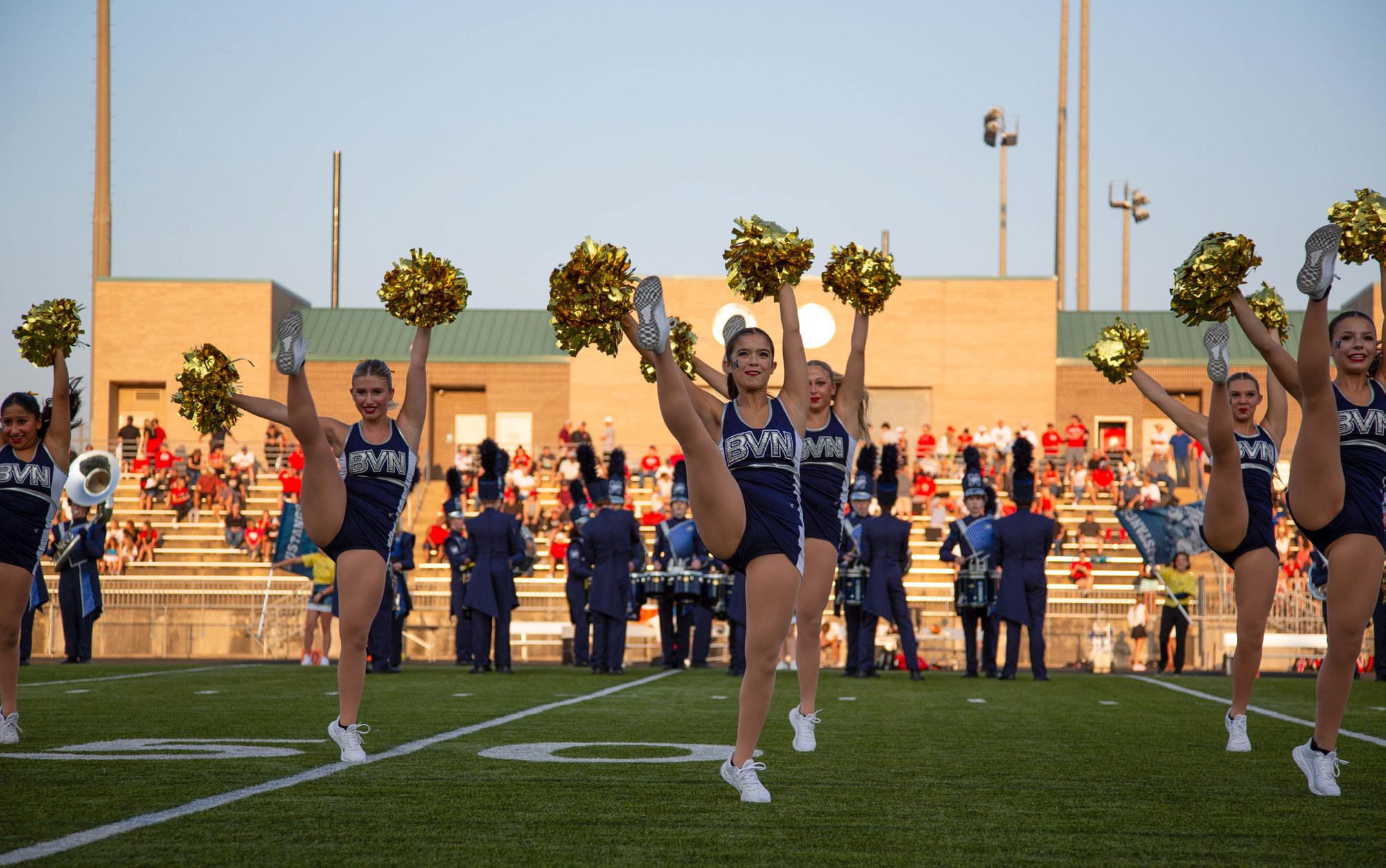
How did the Universal Dance Association dance competition inspire BVN dancers?
By Sydney KortOn Jan. 12-14, Universal Dance Association (UDA) held its annual national dance competition in Orlando, Florida, which hosted several college dance teams across the world.
According to Varsity.com, UDA is the largest dance team educator, teaching over 35,000 high school and college elite dancers. Dancers can compete in the hip-hop, pom and jazz categories. The top dances of the competition went viral on social media for their unique choreography.
BVN alumnus Alana Campbell, a former dancer on The North Stars team and freshman on the Iowa State dance team, said social media helped bring more recognition to dance and UDA nationals.
“It inspired us how much recognition UDA nationals got this year, not just in the dance world,” Campbell said. “I have friends that
aren’t dancers texting me with UDA videos on their ‘for you’ pages on TikTok.”
The Ohio State and Minnesota dance teams’ performances in particular sparked arguments online about which group should have won for the Division 1A jazz event.
“
Dance gives you the freedom to kind of do what you want while making something beautiful with other people and making connections –Paz Aguilera
Sophomore and The North Stars dancer Paz Aguilera said she believes “Minnesota’s jazz was just better overall.”
The competition not only brought national attention to the art but
inspired dancers around the country, including those on The North Stars Dance Team, by showing high school dancers what their experience could look like in the future.
“Watching super talented people do something they love pushes me to improve and to work harder,” Aguilera said.
Aguilera started dancing when she was two years old and plans to continue her dance experience after high school.
“More recently I have wanted to dance in college,” Aguilera said.
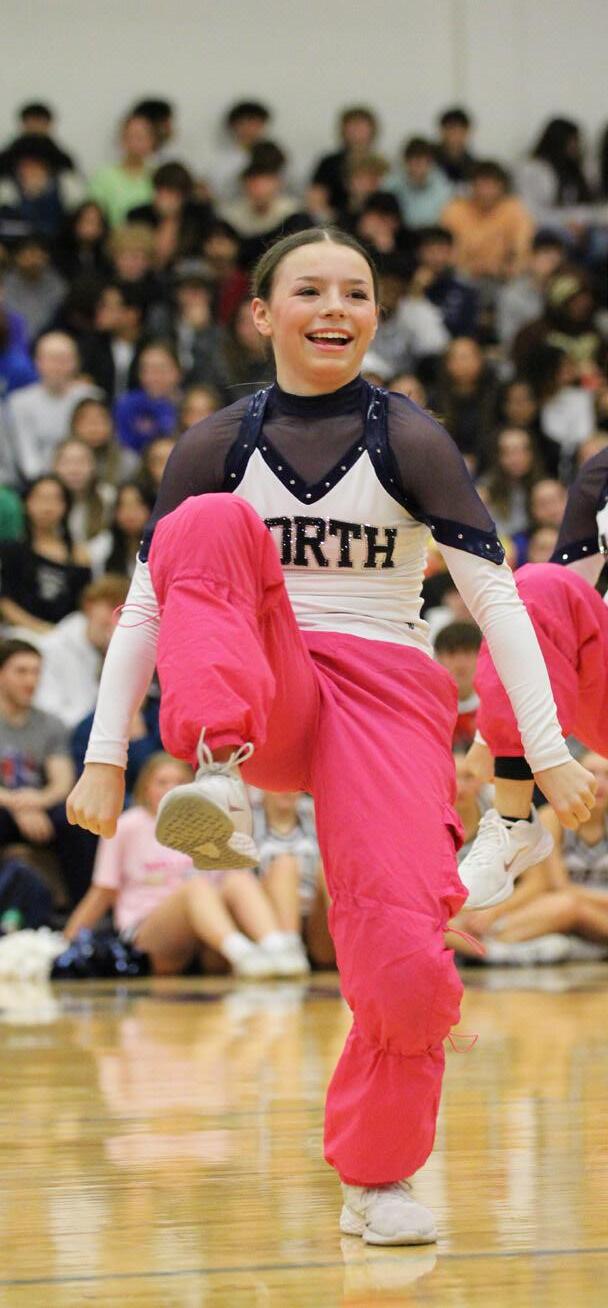
“Watching nationals, being on a high school dance team and being in the environment where people are constantly talking about college dance really influenced me to want to dance in college.”
Many colleges host clinics for high schoolers interested in pursuing dance in college. Campbell went to four dance clinics: two for Iowa State, one for the University of Iowa and one at the University of Kansas.
“[The clinics] lead you through technique and teach you combos,” Campbell said. “We always did a game day and a jazz, hip-hop or lyrical [dance]. It just got you a sense of the team’s style, seeing if that was something you felt comfortable with. I always just thought it was super fun and a great way to introduce myself to the team, coaches and make friends that could potentially be my teammates one day.”
Campbell chose Iowa State partially because of the dance clinics.
“I just felt like I really connected with the team a lot more and just admired their work ethic,” Campbell
said. “Seeing the team culture is what drew me to Iowa State.”
Aguilera said being on a high school dance team is helping prepare her for college.
“There are spirit components and pom components that you don’t get at a studio,” Aguilera said.
Aguilera is working toward the Arizona State dance team because of the girls’ style and close bond.
“Watching UDA nationals this year has pushed me so much more to improve,” Aguilera said, “and really work towards being on a college dance team so that I can experience that same feeling.”



Ken Taylor has been at BVN for 24 years. Why did he start teaching, and what has it been like being the voice of the mustangs?
Ken Taylor may be known for teaching English, or maybe as a former coach, but his voice is recognizable from Friday football and basketball games. Taylor has been at BVN for 24 years and involved with numerous programs and clubs. He was announcing on the side for about 10 years on a radio talk show when the BVN administration asked him to start for the school.
“Announcing forces you to pay so much more attention than you ever have to in the stands,” Taylor said. “You pay attention in the stands, but I actually have to know every play and what’s going on, so I study the game a little more, almost like when I was coaching. It does give me a chance to get to know those kids better, and I often come in and ask them about specific plays.”
Taylor said being monotone has never really been an issue for him because of his excitement for sports, but added that experience helps
him feel more comfortable as an announcer.
“I like the closeness of basketball and the intensity of that, but since I coached football, I feel like I know it better, and sometimes I feel more equipped,” Taylor said. “I never coached basketball. I don’t feel as knowledgeable as I do in football.”
20 years and most of the basketball games.”
“ I have always gone to games, I have always enjoyed being a part of that.
Taylor said being the announcer for the school has helped build relationships with his students outside the classroom.
“I have always gone to games, I have always enjoyed being a part of that,” Taylor said. “So even when I wasn’t coaching, I have been to about every football game here in the last
Taylor’s first degree is in business, and he worked in and managed many restaurants for about five years. He got a late start teaching at 27 years old after finding a tutoring advertisement. The restaurant Taylor worked for was closed on Mondays, so he would go to help the kids.
–Ken Taylor“
“I would go down and tutor every Monday, and I went home one day and was telling [my wife] Brenda all about it,” Taylor said. “She looked at me, and she doesn’t even remember saying this, but she said, ‘The one day you come home happy is on Mondays.’ That’s when I went back and got my English degree.”
Taylor is now the English
department chair at BVN and said his colleagues “just make my job worth coming in most days.” In 2020, he was voted by the staff as BVN teacher of the year.
“It’s humbling because when you know how many great teachers are in this building, to be voted on by them is a really humbling experience,” Taylor said. “This may sound strange, but when you win something like that, it reminds you of your downfalls. It reminds you to do better.”
Junior Natalia Placzek described Taylor as a fun and “really supportive” teacher.
“He’s really creative,” Placzek said. “He connects his teaching to some of his life stories.”
Taylor said his students have taught him lessons as well.
“It doesn’t really matter what level a student comes in at, but it matters a lot to me where they leave at,” Taylor said. “I always try to keep that in mind,
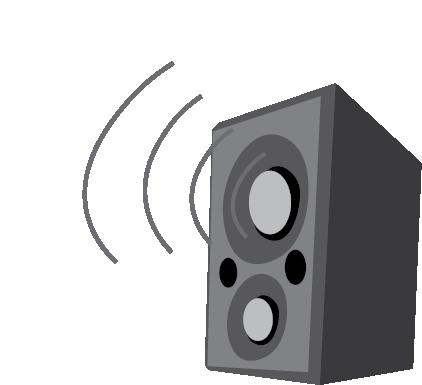
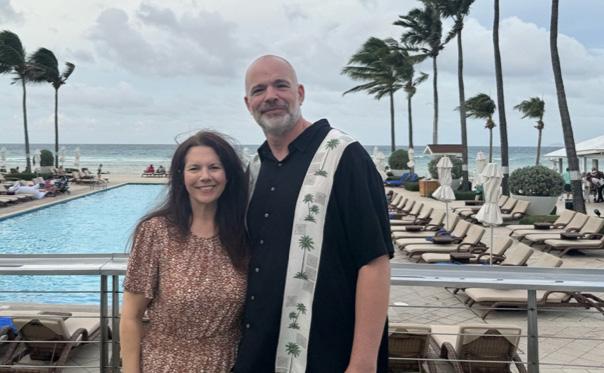
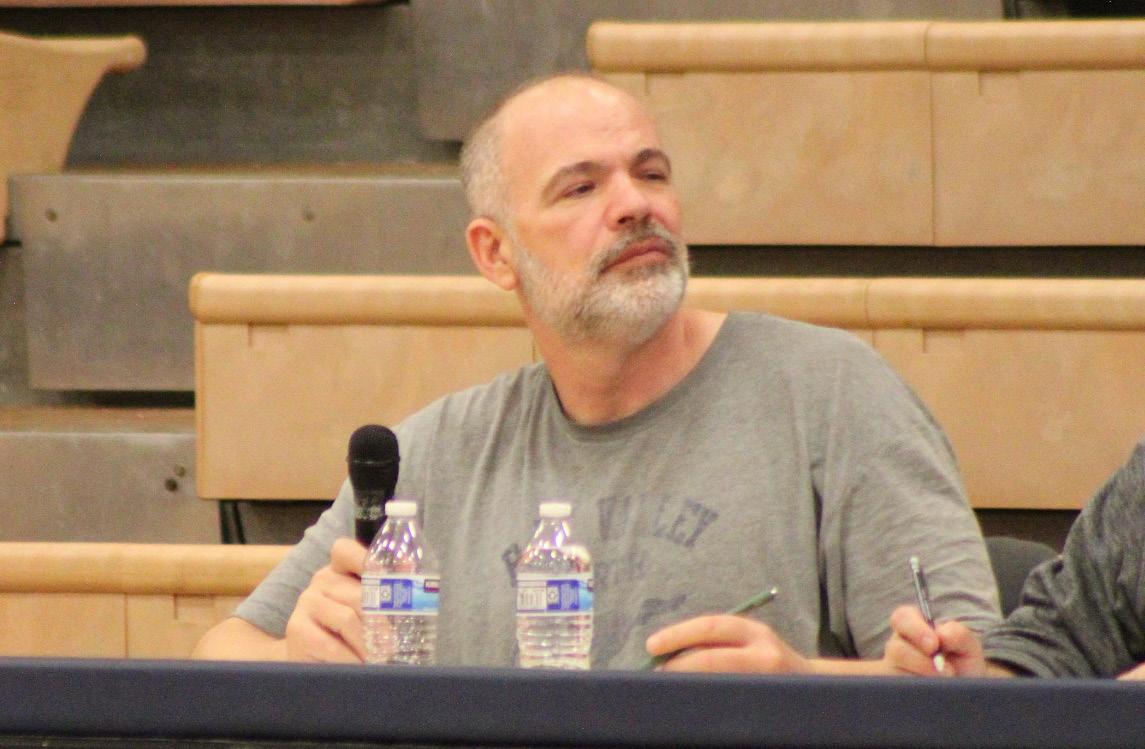

Students compare the effects of the traditional weekend to those of the three-day weekend as the additional day off gathers traction locally and globally.
By Lauren KopitasMany students spend their two-day weekends bouncing between assignments, extracurriculars, rest and quality time with those closest to them. Students’ resulting exhaustion has raised questions about whether having an additional day off may provide more benefits than the traditional weekend.
While the weekend is often labeled a period of rest, many students consider their two days away from school to be anything but rejuvenating. Junior Noemi Nightingale described her busy weekend schedule and said there isn’t enough time for rest, recuperation and self-care.
“I work on Sundays, and I spend my Saturdays doing homework and preparing for the week ahead,” Nightingale said. “Not much time goes to resting or checking in with myself. All-in-all, it’s difficult for me to distance myself from school at all.”
Some members of the school’s staff claim that this exhaustion may contribute to diminished motivation in the classroom. Social studies teacher Jason Smajda explained that when students approach their free time as an opportunity for enjoyment rather than rest, they often feel exhausted, which complicates the learning process.
“Lots of kids are preoccupied
during the week, so when they do manage to find free time over the weekend, they spend it doing activities they enjoy simply so they can be happy,” Smajda said. “They’d rather make up for lost time than reset, which doesn’t leave much time for genuine rest. For this reason, kids come to school exhausted on Monday morning, which makes it difficult for them to truly enjoy learning.”
“
So many of us strive to excel, and because of our hard work, I think the school should acknowledge our efforts and promote the growth of personal values for balance in our lives.
–Noemi
Nightingale said that without a true break, many kids become dissatisfied with school.
“When you can’t get enough distance from a routine of to-dos, you learn to dislike it,” Nightingale said. “It’s traditional for kids in this society not to take time for ourselves, which gives us a negative impression about why the world values us.”
This perceived emphasis on output is part of the reason why schools and corporations have taken interest in the three-day weekend. Those that make the switch have also found global support within the past decade. The non-profit 4 Day Week Global is part of this global network and includes over one hundred companies from America, Britain, Australia, Canada and Ireland that have adopted the three-day weekend. The organization prioritizes “balance, well-being and effectiveness” in the workplace, according to their website. Several local school districts, like Independence School District, have made the shift to the three-day weekend for similar reasons.
According to University of Kansas professor of psychology Nancy Hamilton, longer weekends offer numerous health benefits.
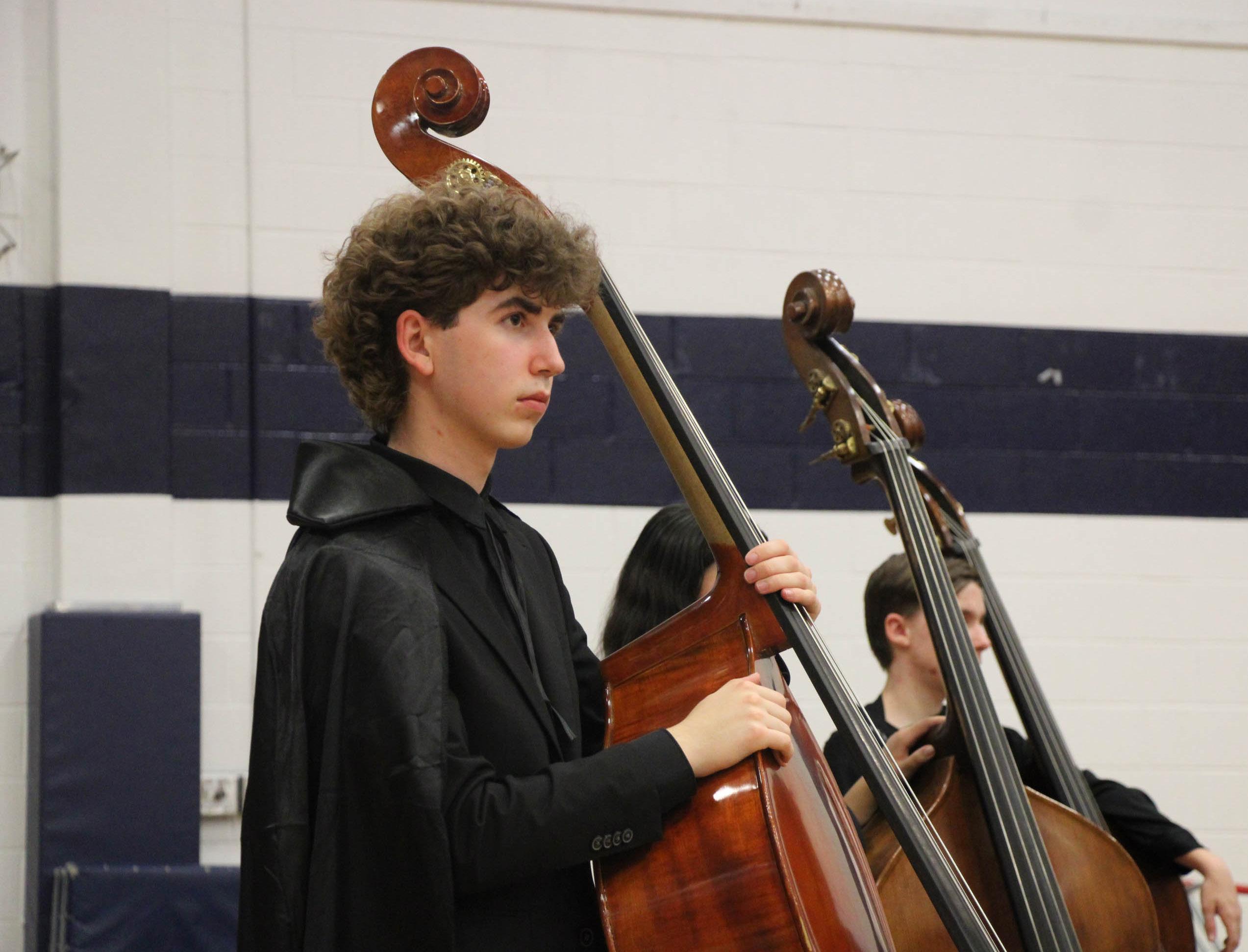
“There are lots of benefits for four-day work weeks, ranging from opportunities for beneficial health behaviors including additional sleep time, to time for recreational activities that would ideally include exercise, to additional time for social relationships,” Hamilton wrote in an email. “Sleep, exercise and supportive bonds have all been shown to have positive effects on stress hormones.”
The transition to a longer weekend would encourage students to explore their interests and support their personal values, Nightingale said.
“I think the three-day weekend would be very beneficial, especially for our student body,” Nightingale said. “BVN is the highest performing public school in the state. So many of us strive to excel, and because of our hard work, I think the school should acknowledge our efforts and promote the growth of personal values for
balance in our lives.”
However, Smajda said the threeday weekend could potentially have academic drawbacks.
“I think [a longer weekend] would certainly help students’ rest, but it might hurt their retention,” Smajda said. “Any extended break allows kids to distance themselves from class material. When they return to school, it takes additional time for them to reintegrate. In the end, the three-day weekend could potentially set students back.”
Smajda added that students’ shortened weeks likely wouldn’t align with their parents’ work schedules.
“Most local businesses recognize the traditional two-day weekend,” Smajda said. “If Blue Valley allowed students three days off school, the parents of high schoolers might worry about their kids on their extra day off. In addition, the parents of children
with disabilities would have to find child care arrangements, which might not be a financial possibility for some.”
Regardless of whether the threeday weekend will ultimately prove viable in the Blue Valley School District, students and staff recognize a need to balance personal interests and rest.
“I recommend that kids keep things in perspective,” Nightingale said. “If you absolutely can’t find time for yourself in the moment, hold yourself accountable and make plans to pursue something personally meaningful in the future.”
Smajda said although students may fill their time, they will eventually need to care for their well-being.
“There’s plenty of time in a day, in a weekend, in life,” Smajda said. “You could work for every waking moment, but at some point, you just have to give yourself room to breathe.”
There are many different explanations for how the human brain is affected by time. What are BVN students’ opinions on time perception?
By Anjali KambhampatiTick tock. The classroom is filled with low energy as students casually glance up at the clock to see how much time has passed. Some feel like the clock hands have shifted in the blink of an eye, while others feel the urge to move the hands themselves. How have students’ perceptions of time changed in the past few years?
Junior Ella Grant said she feels like as she gets older, time moves faster.
“When I was a kid, I always remember Christmas specifically and thinking, ‘Oh my gosh, I have to wait a whole year until Christmas,’ and now it comes right around so soon,” Grant said.
In the past 10 years, school has changed her perception of time, Grant said.
“I think of time through the school year, and it’s just continued to speed up every year,” Grant said.
In addition to the school calendar, overall overstimulation contributes to time, senior Amelia Law said.
“It’s really hard for us to keep a balance of adequate rest and mental break,” Law said. “Ask anyone if they
find the idea of meditating appealing. They’re going to say no because no one wants to sit with their own thoughts. That also contributes to time perception. Being able to hear yourself think makes time feel longer. Having content thrown at you all day speeds time up because you’re distracted and actively engage in the moment.”
Grant added that social media apps have affected her views on time perception.
“We’ve finally reached the point where it’s been about a decade from when we became able to retain our memories, and that’s why I think people are so aware of time peception now.
“I have seen tons of stuff about how time has been moving really fast and a lot on TikTok talking about release dates of movies or popular TV shows and how long ago that was,” Grant said. “It has changed my perception of time because I realized, ‘Wow, [time]
is actually moving a lot faster.’ I never really noticed until [TikTok videos] say, ‘This show came out 10 years ago,’ and I’m like, ‘I watched that when I was a kid — that’s crazy.’” Both students also agree that technology, especially social media, has affected others’ perception of time.
–Amelia Law“
“When I was a kid, I spent a lot more time outside,” Grant said.
“Everything is so focused on social media now, and I don’t think it was that way before. I think having technology and social media has disrupted or disoriented what the younger kids think that their lives should be like. I
remember thinking, ‘Oh my gosh, I want to be sixteen.’ That’s what age all the kids in the Disney Channel shows were. But instead of Disney Channel, it’s real people on social media. Technology has definitely disoriented their time, self-worth and image.”
Contrary to many teenagers today, Law deleted social media, which has affected her sense of time.
“I had college applications this year, and the ‘death-scroll’ on TikTok and Instagram Reels was a bit too much because you get lost in [videos],” Law said. “Time perceptions are so odd in the sense that everyone is like, ‘You should make use of every single minute of every day.’ It makes sense once you try it, but at the same time, it’s very hard to do because of current social media.”
Law also believes that perceiving a faster passage of time has a lot to do with age, she said.
“We are all only in the first two decades of our lives, and infantile amnesia is a thing where none of us are able to remember things in childhood,” Law said. “I think we are more aware of the time that has passed because now we actually have memories of time that has passed. We’ve finally reached the point where it’s been about a decade from when we
became able to retain our memories, and that’s why I think people are so aware of time perception now.”
Psychologist Dr. Caroline Danda said time perception differs within generations.
“I feel like the older generations tend to have more patience and have more of an ability to sustain attention to different things and to handle boredom,” Danda said. “So in that sense, I would think that time for an older generation might move slowly compared to a newer generation.”
Grant added that the effects of age can be traced back to the pandemic.
“I think [Gen Alpha] is growing up
differently because they went through COVID-19 at such a different stage,” Grant said. “I learned a lot of manners and social awareness in elementary school, and I think they lack that, which has been a downfall for them. Everything is definitely speeding for them; a lot of big life achievements are happening earlier and earlier … I know that COVID-19 has made everything for me feel sped up timewise, but for the younger kids, it’s less about time and more about those developing years of their lives.”
According to the National Library of Medicine, the pandemic has caused a disconnection between measurable

by.
objective time and internally perceived subjective time, and it’s likely that changed routines and uncertainty about the future contribute to an altered experience of the passage of time.
“There were so many restrictions in what our normal everyday life was that it seemed to slow time down because in a way, we have less memories of less things to do, so there was a little bit of feeling like, ‘How long is this [COVID-19 lockdown] really going to last?’ It felt like we were in this state of lockdown and restriction, and I would put that under a fear of unpleasant state, so it definitely feels like it will last a really long time,” Danda said. “It’s like, here’s this moment in time, and when you look back on that moment, it’s almost like it moves very quickly. But I think in the moment of COVID-19, it felt like time was moving very slowly.”
Grant also said the pandemic has “majorly impacted people’s perception of time.”
“Mentally, I feel like I’m still in 2020 because we never got a full, traditional year — the school year got messed up, and it kind of pushed everything back — so I don’t know if it’s because of the fact that everything got pushed back that it’s [time] speeding up, or just being so still for so long and then getting back into the movement of school has changed [time], but [time] has definitely gone faster,” Grant said.
Grant also said her perception of time would change if COVID-19 had never happened.
“I think [time] would be more steady,” Grant said. “I feel like I wouldn’t have lost time; I feel like I
lost time with COVID-19. I definitely lost experiences, but I think that time wouldn’t be going as fast as it is [if the COVID-19 pandemic never happened].”
As a senior, Law has different opinions regarding the relationship between the pandemic and time perception due to seniors starting high school during frequent surges of COVID-19 cases.
“COVID-19 was both the slowest and fastest year of our lives because we were stuck doing nothing,” Law said. “TikTok was being introduced, and since we were stuck at home, we kind of lost our ability to gauge time since we were shut in our homes all the time. Not actively going out of the house, not going to school, all of our sleep schedules being messed up — we didn’t have these keystones during our daily schedule to help us keep track because we were just permanently in the same space.”
Law also explained the relationship between time and school.
“During the school week, time passes by so slowly because we are actively aware of the things we are doing while at school: We wake up, go to school, go home and maybe have some extracurriculars. We are actively aware of our schedule and the time passing while, during COVID-19, we were all at home,” Law said. “For me personally, when I think of underclassmen years, I only think of sophomore year. The entirety of freshman year felt like it was only two or three months long, and it’s because of the amount of time I spent at home. I couldn’t keep track of my days, so they just flew in a straight line.”
Although Law’s perception of time
changed during the pandemic, she has started adjusting to these shifts.
“A lot of us are still adjusting,” Law said. “I feel like I’ve done way better after I deleted a lot of social media. Since COVID-19, I’ve definitely tried to do more and make up for lost time, but at the same time, I kept myself so overstimulated last semester to the point where I kind of broke, so I had to reflect.”
Law said her previous semester felt like the complete opposite of COVID-19 timewise due to her busy schedule.
“COVID-19 was a straight line or standstill; everything just blurred together,” Law said. “But with last semester, every single week, I could remember one event, and it was so distinct and chopped up because I was actively doing things. I feel like how we keep ourselves busy versus how we let ourselves rest contributes a lot to our perception of time.”
When looking into the perception of time from a mental health standpoint, Law said the less mentally stable someone is, the slower time is going to feel to them.
“If you’re mentally unhinged, you’re more inclined to either sit with your thoughts or be completely distracted from your thoughts,” Law said. “But you’re going to be aware of your emotional standpoint every single day, or maybe you’re going to be completely numb. I feel like the less active you make yourself, the more prone you are to having a very fast or extreme perception of time, and the more prone you are to becoming mentally unstable is the theory I’m going to go with.”
Danda added that emotional states
affect the perception of time.
“If we’re enjoying something, there is the phrase ‘time flies when we’re having fun,’ and sometimes we’re so caught up in the moment that we’re not aware of time passing,” Danda said. “It fees like time is passing very quickly because we’re very engaged. So mindfulness could either speed up or slow down time. But if you’re very mindful and you’re paying too much attention to time … that will likely increase the perception of how long something is.”
Likewise, if someone is doing something in a fearful state, they feel like it is lasting forever, Danda said.
“[The fearful situation] isn’t lasting forever; it’s something that might be a few seconds, and people will say, ‘Oh my gosh, that lasted forever,’ or ‘That felt like thirty minutes,’ when it was really only a couple minutes,” Danda said.
Danda also said time perception is affected by how much attention is given to a specific thing.
“A lot of times, if we’re more mindful or more engaged with something, our time perception may either be more accurate or slowed down, whereas if we’re not very mindful and moving through things very quickly, when our attention is not really focused on anything, it might very well feel like things are moving fast,” Danda said. “It’s also a sense of where we’re at and what we’re thinking. Sometimes the future seems very far away until it doesn’t, and then sometimes if we’re thinking about childhood, for example, or just far in the past, relative to adult years, it feels like things are sped up or going fast.”
Regardless of the cause, students’
changed perceptions of time affect daily life. Grant feels as though time limits her productivity, she said.
“There are times when I will have so much work to do in a week, and sometimes I get so stressed that I just don’t do a lot of it, and then work just gets more pushed back, and then more assignments come in,” Grant said. “I think the pace of school is good, and I’m definitely in more accelerated classes so everything moves faster, but with time just feeling faster, I definitely find myself getting behind.”
Law also said time holds her back.
“I used to live in Hong Kong, and I moved to the States just in time for high school,” Law said. “When I was in Hong Kong, every day would just be the same exact thing: I would do work, I would do more work, I would eat, then do more work, then go to bed. Everything just felt so monotonous. But in the U.S., the high schools here actively encourage you to choose what you want to do with your time. They give you so many class options … That contributed to me being a lot more aware of how I choose to spend my time.”
Members of the broadcast team reflect on what goes into the production of each North Report.
By Lilly CopelandSix times every year, BVN’s broadcast team produces the North Report, which uses creative videos acting as a visual representation of the student body. The collection of mini films allows viewers to explore current events within the school through a creative and entertaining format. Features ranging from sports media to creative skits engage a variety of student interests. The process of producing these diverse films is led by the dedication of the broadcast team and the many talents each member provides.
The North Report has long been a part of BVN culture, however, a new era of broadcast journalism has followed the new media production teacher. At the start of the 2022 school year, former English teacher Jeremy Chugg switched subjects to teach Media and Production.
“I was nervous thinking about it at first, but the more I thought about it, the more I realized that [broadcast] would be all of the things I loved about teaching, writing and being creative,” Chugg said.
Chugg came into the position with a freshly formed perception of what goes into producing media.
“You don’t realize the amount of work that goes into every edit that everybody’s putting out,” Chugg said. “I think that it’s interesting — that people who are producing shows and the way that they’re choosing which cameras to use — because they’re trying to tell us a story.”
These fundamentals guided Chugg in creating the filmmaking roles and processes necessary for assembling the North Report.
“Everybody within their groups in my class is going to have experience planning, editing and directing a shoot,” Chugg said.
The class offers the opportunity to explore the different aspects of media. Senior Audrey Branner enrolled to discover how she can channel her inner creativity in a media journalism class.
“When I was a freshman, I saw a little teaser video and realized that I’ve always wanted to make videos,” Branner said. “So I went for it. It was something where I got to create, and I really enjoyed creating things and then being able to share them.”
“I’ve always [loved] sports, and they have been a really large part of my life,” senior Janelle Green said. “I have found a recent love for media and cameras, so sports media combines the two perfectly. My role in the North Report is mainly sports focused. We have people on our crew who are more passionate about short stories, are more passionate about news stories.”
The process of creating the North Report follows a timeline that spans from a few weeks to a month.
“My advice would be like, if you’re interested at all, do it. It’s a growing field.
–Jeremy Chugg“
“The number of North Reports varies depending on how that semester is going so far, and once the classes agree on how many North reports we want to get out,” Green said.
Unlike other electives, broadcast’s unique class structure allows for various freedoms within the coursework.
“It’s a lot different than other classes,” Branner said. “You’re very self-directed in what you do and how much you take on and the amount of work that you put on yourself because it is such a creatively driven class.”
The class also lets students specialize in a specific interest, as they can choose the subjects of their videos.
Students first decide on a story for the video, and the class is formatted so that students receive direction from peers about where to go next.
“There are about a couple days to a week when you have your pitch,” Green said. “We kind of bounce off each other’s ideas, and then it’s go time. We have about two weeks of work, work, work, work, work.”
For junior and North Report producer Samantha Haas, the pitch plays a vital role in her development process.
“During our pitch day, you create

slides, go up in front of the class and kind of talk about this idea you have,” Haas said. “You get to ask questions, like, here’s what I’m unsure about. People will also offer to help you with it or give suggestions or feedback about your video.”
Using the feedback from pitches, the broadcast team can venture into the next step: production. Depending on the focus, students will begin to plan dates to film, edit or begin scriptwriting for their videos.
“From there, you start planning what you want to do, finalizing reaching out to people,” Haas said. “And then it goes into the production, like setting up filming the event or filming the things. From there, you edit everything together.”
As a producer, Haas’s responsibility continues after the initial deadline.
“We have a final due date for the North Report when everyone has to submit their videos to get them in,” Haas said. “Then the three people who work on production — me, Eric and Connor — put everything together laid out on a whiteboard and decide the final product, even though we all edit it together.”
Viewing the final product can provide a sense of accomplishment for the members of the team and is one of the biggest rewards the class can offer, Haas said.
“Having people come up to you afterward and [say], ‘that was awesome.’ I love that kind of moment of [thinking], ‘I made this. This is all I put in the effort for,’” Haas said.
For Chugg, there are other reasons students should join the broadcast.
“My advice would be, if you’re interested at all, do it,” Chugg said. “[Broadcast is] a growing field. With lots of opportunity [and] with new technology, the entry-level barrier is actually decreasing in some ways. [Students] are starting from zero, and then by the end of the semester, the growth curve is just exponential.” Step






Two BVN students reflect on life as student-athletes and how balancing school and a semipro soccer career works.
By Cash DurbinMLS NEXT, according to the MLS NEXT website, is youth soccer reimagined. Founded in 2020 as a successor to the U.S. Soccer Development Academy, it was meant to change the way youth soccer is approached in the U.S. and Canada. Major League Soccer (MLS) took over the development league in 2007 from the U.S. Soccer Federation and is trying to revolutionize youth soccer in the U.S. and Canada. Between MLS NEXT and MLS is MLS NEXT PRO, which provides a full transition from youth soccer to professional soccer in Canada and the U.S. In recent years, the bond between the three levels has been strengthened, making it easier for kids in the MLS programs to make it to a professional level. MLS NEXT incorporates more teams than its predecessor, the U.S. Soccer Development Academy, which currently has 133 clubs, 590 teams and over 11,000 players.

Ryan Wagner scans the field before making a pass during an MLS NEXT game. Photo provided by Ryan Wagner.
Senior Ryan Wagner and has been in the MLS NEXT program for around three years. Wagner will attend a Division 1 school, Furman University, to continue playing soccer come next fall. He thanks MLS NEXT for allowing him to play in front of so many coaches at different tournaments and showcases.
Wagner was 11 when he first tried out for the Sporting KC academy and played through all the age groups until he was old enough to join MLS NEXT when he was at the U15 level. U15 stands for under 15 and is a grouping for youth soccer used around the globe.
He has had a few great experiences through the MLS NEXT program, but he always loves the Generation Adidas (GA) Cup. The GA Cup is a tournament in Tampa, Florida for teams in MLS NEXT and is an elite
competition for youth players run by the MLS. He’s been provided with many opportunities and has met many stars, like Benjamin Cremashi, who now plays with Lionel Messi at Inter Miami.
Though he has had a great experience in MLS NEXT, he said it wasn’t without struggles. Wagner said the hardest challenge he faced was surgery for his broken elbow.
“I had to get surgery,” Wagner said. “So, I was out for a while. I just had to face diversity while coming back. Everybody was progressing while I was stuck in the same place. And then I had to slowly come back.”
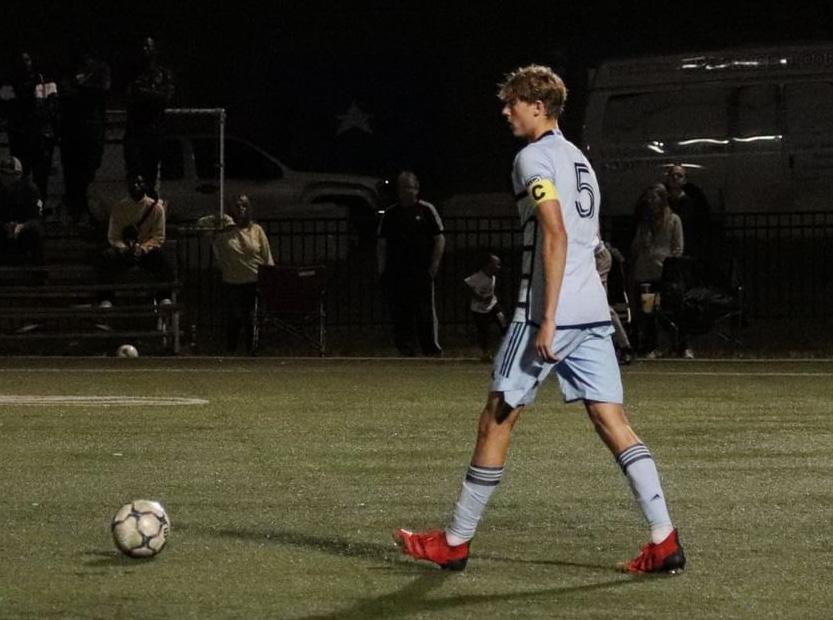
Left: Ryan Wagner dribbles the ball forward during an MLS NEXT game. Photo provided
Below:
a goal
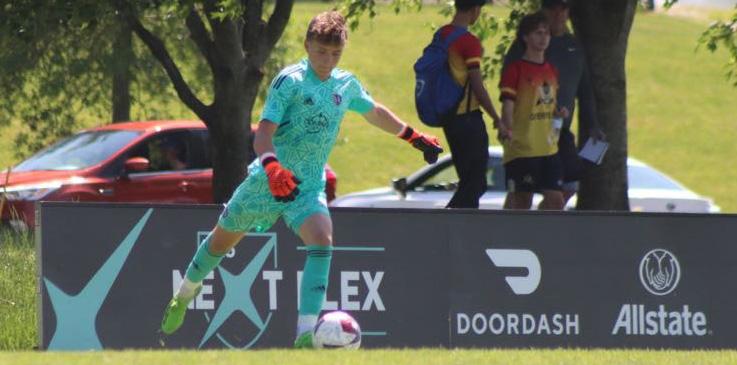
Junior Beau Barren has been in the MLS NEXT program for three years. Barren moved from Michigan to Kansas to join the program and said it was hard at first to gain confidence. He was scouted by the team at a tournament in Michigan when he was playing club soccer there.
Barren said he enjoys the team aspect of MLS NEXT and has made many friends on his teams as well as other teams from within the league. He added that soccer taught him the “mentality of not letting things get to you” and that it is necessary to forget the negatives if one wants to improve and to use everything to learn and get better.
Barren also said he enjoys the trips he gets to go on, with the major one every year being the GA Cup.
The gym is a nice escape for Barren
when he needs it, as well as playing Xbox with his friend back home in Michigan.
The most fun and exciting experience he’s had through MLS NEXT was practicing with the Sporting KC first team and players like Johnny Russell and Daniel Salloi, he said.
Overall, Barren said he enjoyed his time in the program and still hopes to get a professional contract, but he is willing to go through college if he needs to. Barren is an example of how the MLS NEXT program gives a pathway for kids into professional soccer and shows them the world of soccer from a young age.
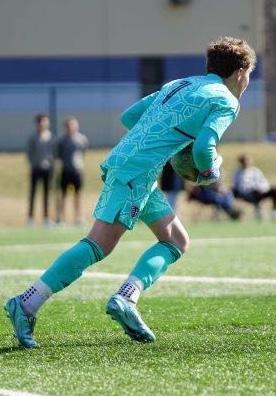
Beau Barren runs out of the goal during an MLS NEXT game. Photo provided
There are many staff members at BVN that play a role in the day-to -day success of teachers and students. Here’s a deeper look into the lives of these individuals.
BVN has 213 employees. Of these 213 employees, only 145 are teachers. The day-to-day functioning of the school relies on people who can be overlooked by students. Custodians, bookkeepers, cafeteria employees and registrars keep the district running smoothly. Their work helps students succeed and work in a safe and clean environment. 67% of 88 students polled on @bvnnews on Instagram are unaware of the tasks these employees are responsible for and the impact they have on the school.
Although the registrar is new to the school this year, her work impacts all students. Ann LaGrange is responsible for the transcripts at BVN. She uploads every transcript at the end of each semester. That’s 1,461 transcripts, all done in the span of a few weeks. While some might find uploading over a thousand transcripts tedious, LaGrange said it’s one of her favorite parts of her job.
If a student transfers away from BVN, she gathers their information and sends it to the new school. Tasks that may seem automatic are actually done in multiple straps by LaGrange.
“If [students]
By Alex Robertsonwithdraw from the school completely, there’s a whole list of stuff that I have to take care of,” LaGrange said. “If you were due to leave right now, I’d go to all your teachers and say, ‘What is the percentage of [the student’s] grade at this time?’ I have to get laptops returned. I have to get library books returned. I have to call the bookkeeper and see if your family owes any fees to the school.”
“
If a student moves to BVN, she helps enroll them and get the paperwork from their old school. LaGrange added that bringing in new students to BVN is “important.”
directly, she knows who might be going through a tough time. When she sees a student struggling, she reaches out to counselors to make sure they are getting the help they need. Superintendent Dr. Tonya Merrigan saw the concern “unsung heroes” showed for students.
Every single person who works in our buildings is an educator of some sort.
–Tonya Merrigan“
“I think you get [new students] in as quickly as possible because they need to be in school,” LaGrange said.
LaGrange also has insight into student success. Being responsible for transcripts means she sees everyone’s grades. While she may not be in charge of assisting students
As a former principal, Merrigan received feedback from staff that helped her support her students. Lunch ladies who served the same students every morning and custodians who opened the door first thing in the morning built relationships and noticed when something was amiss. The communication between these staff members, school leaders and teachers allows students to succeed both in and out of the classroom.
“There are some students who might not come to school if they didn’t have that connection,” Merrigan said.

The impact that nonteacher personnel have on students can be just as influential as that of teachers, according to Merrigan.
“Every single person who works in our buildings is an educator of some sort,” Merrigan said.
Aside from looking out for students, Merrigan attributes the success of Blue Valley schools to the teamwork found within each school. If there is someone to fill each role, then each role can be done to the fullest. Without custodians cleaning and registrars entering transcripts, teachers cannot give all of their attention to teaching. In order for these unsung heroes to have the most success, they receive support from each individual school and the district.
“The expectation is that we all have teams,” Merrigan said. “We all get input from lots of different teams who are doing that work to make sure we make the best decision for kids.”
While district leadership encourages teams within individual schools, teams across the district play a role in each school’s success. Both BVN’s registrar and bookkeeper work with personnel from other schools and District Offices to carry out their responsibilities. Bookkeeper Torrence Kelley is responsible for all accounting coming out of BVN. He handles a variety of tasks and works with different personnel at the district level.
“They’re kind of experts

in their own field,” Kelley said. “The accountants over here in the schools, there’s one of us, so we have to touch everything.”
From clubs to classroom expenses to personal credit cards for teachers, Kelley has to make sure the paperwork is correct for the district. His job is more about balance than math. Making sure numbers are accurate is Kelley’s favorite part of his job, he said.
Balance is important not just in accounting but throughout all of BVN. Similar to teachers and administration, the unsung heroes of BVN balance their time between predetermined responsibilities and the requests that pop up every day. Emails, phone calls and office drop bys keep both Kelley and LaGrange busy.
“There is no typical day,” LaGrange said. “Putting out fires is a good way to describe it.”
Custodial staff and cafeteria staff must also respond quickly, whether cleaning up unplanned spills to keep students safe or pivoting in the lunch room should any food item not go to plan. This flexibility and adaptability allows students to go about their days without noticing major disturbances.
The teamwork and communication required from every staff member at BVN allows for seamless days and uninterrupted learning. For the school’s team to run smoothly, there must be a strong pride and belief system in place.
“Seeing the motivation and the pride that the staff and faculty at this facility is very inspiring,” Kelley said. “The willingness to help each other here is something that is very rare out in the working environment.”
LaGrange said the building’s success is because of the passion of the BVN staff — a passion that doesn’t start on Aug. 14, but at the welcome back event put on by the district.
“When we welcome everybody back at the beginning of the year, it’s every staff member, not just the teachers,” Merrigan said.
Throughout the year, especially during appreciation weeks, these unsung heroes receive recognition alongside teachers. Additionally, the Board of Education recognizes one classified employee — an unsung hero — each month. While recognition from fellow staff plays a role in the commitment and success of BVN’s unsung heroes, students can also play a role. According to LaGrange, a student’s patience is key when looking for help.
“I try not to let anything fall through the cracks,” LaGrange said. “Everything takes time, and everything has procedures. I learn something new every day.”
From stuffed animals to water bottles, students have a number of different comfort items. What are these comfort items for, and what’s the story behind them?
By Madi GarreltsAs some students grow older, they throw their trinkets and knick-knacks to the back of the closet. From stuffed animals to old friendship bracelets, some of these items are left behind. Yet others hold onto these items, even gaining a sense of comfort from them. What’s the reasoning behind the attachment to these objects?
For many people, the attachment starts at an early age. Comfort items are often used as a transitional item for children from dependence to independence. Infants early on are highly dependent on their parents. As the child grows, they begin to detach themselves from their parents. The transition for many children can be a difficult one, and a stuffed animal or blanket can help the process.
Yet not all connections with objects stem from childhood. According to TIME, “Whether they’re dealing with anxiety, stress, grief, isolation, or memory loss, countless people find solace in stuffed animals, weighted blankets, and other soft comfort objects.”
Comfort items provide many individuals with a sense of familiarity, no matter where the connection grew from.
Senior Edward Mu’s comfort item is a stuffed orca named Shammy.
“When I was a child, I had a different stuffed animal orca, but when
I moved here in third grade, I lost the orca and I was really distraught,” Mu said. “Then my mom got me Shammy as a replacement.”
Mu said over time, the special value behind the item has changed.
“Shammy to me has been a friend,” Mu said. “Over time it has evolved from this semisentiment from when I was a kid, to more of a representation of comfort and safety and stability in my life.”
Even though the meaning behind the item has changed, Mu said he believes he will always have it.
“It is just the experience of how my family came to help deal with the emotional trauma of moving,”
“
Holtorf said his comfort item is also a stuffed animal. Holtorf got the pink rabbit at two years old and said this item has been with him for as long as he can remember.
“Pretty much every road trip I’ve ever been on, every blanket fort, every sleepover I’ve been to,” Holtorf said. “I really just held onto it longer than most kids do, but it’s nice because everyone has always been so sweet about it.”
I think it’s important to have things you value and things that you feel safe and secure around. It doesn’t necessarily have to be an item like maybe it’s a person or activity. Just something that you overall enjoy.
–Edward Mu“
Holtorf said he always believes he will have the rabbit, as it has always been there for him.
“It was a way little me was able to regulate and be calm and normal, and it transformed into making my preteen years easier and then the transition into my teen years,” Holtorf said.
Mu said, “and even if I lost it again, it will always just represent how my family’s there for me.”
Similar to Mu, senior Grayson
“For example, whenever there’s a big change, it’s always been the one thing that has stayed the same.”
Holtorf also said he believes it’s important for someone to have a
comfort item in their life.
“If you don’t have anything that makes you feel happy, whether it’s a person or something else, it’s just nice to have it with you all the time,” Holtorf said. “It also doesn’t necessarily have to be something you’ve had your whole life, like I know people who have little pins on their backpack and it’s their favorite thing ever. Or maybe a little keychain, and it just brings them so much joy, and it’s just something I love to see in the world.”
Junior Thea Melvin agrees that it’s important for someone to have a comfort item in their life.
“I feel really connected to mine because I’m always wearing them, they’re always with me,” Melvin said. “But I know people who have stuffed animals and blankets and things like that that just bring back good memories, and I just think that’s really important.”
Melvin said her comfort items are the rings she wears each day.
“This first ring is my stepmom’s that she bought in San Juan. She lived there for ten years, and I’m really connected to that island. I’ve been there three times, and it itself is a comfort area because I have friends out there. This next one is made by a Native American from San Juan, then I have this cute one from downtown Kansas City and
it’s from one of my favorite stores,” Melvin said. “This next ring is from Dallas when I walked into a little store near the beach, and I wasn’t expecting to buy anything because at that point, I already had so many rings, but I saw this one and it was so pretty with all the tiny waves on it. This next one I got in Seattle at a flea market, and I remember having to convince my step mom to buy it for me, but she didn’t want to because it was so expensive. This one my grandma got for me in Georgia, and I always think of her when I look at it.”
Melvin said she believes her rings will always be with her.
“I might switch some of them out, but I never take them off,” Melvin said. “In the summertime, you can see tan lines on my fingers. I just believe I always like them.”
From stuffed animals to rings, students have a wide range of items that bring them comfort. They have reached the consensus that these items are important in people’s lives.
“I think it’s important to have things you value and things that you feel safe and secure around,” Mu said. “It doesn’t necessarily have to be an item, like maybe it’s a person or activity. Just something that you overall enjoy.”





As trends change at BVN, so do students’ water bottles. While the use of many plastic water bottles is worse than the life-long use of one reusable water bottle, the line is blurred when purchasing reusable water bottles becomes a fast fad.
Although using reusable water bottles is better for the environment compared to using plastic water bottles, they are made of materials that may harm the environment as well. According to TreeHugger, many water bottles are made out of stainless steel instead of recycled products, and the production of stainless steel drains resources in large quantities.
Junior Morgan Thorpe said she has six water bottles, four of which are Stanleys.
“I use two of my Stanleys [on a regular basis], one of them at school, and one of them I just keep in my room and in my house,” Thorpe said. “But I’m always using reusable bottles.”
According to Stanley’s website, at least 50% of their products will be made using recycled materials by 2025, which benefits the environment. However, the quantity of water bottles being purchased is also a factor to consider. Senior Maggie Ruckman
owns multiple reusable water bottles, but uses one more than others.
“[I own] probably over 10 [reusable water bottles] at least — 10 or 15,” Ruckman said. “I honestly just use my Stanley every single day.”
Thorpe and Ruckman both own multiple water bottles and don’t use them all on a regular basis. They’re not alone. Due to this trend, the concept of reusable water bottles has become an overconsumption issue. According to The Miami Student, the promotion of Stanley tumblers by consumers on
social media has contributed to the trend of collecting them.
Ruckman and Thorpe both said TikTok influenced their water bottle purchases. Social media platforms have power over what people buy, causing fads like the Stanley to spread quickly. According to CNBC Make It, Stanley’s revenue went from $73 million in 2019 to $402 million in 2022. This was due to influencers and others on social media promoting the brand by showing their Stanley collections.
According to Forge Waste and
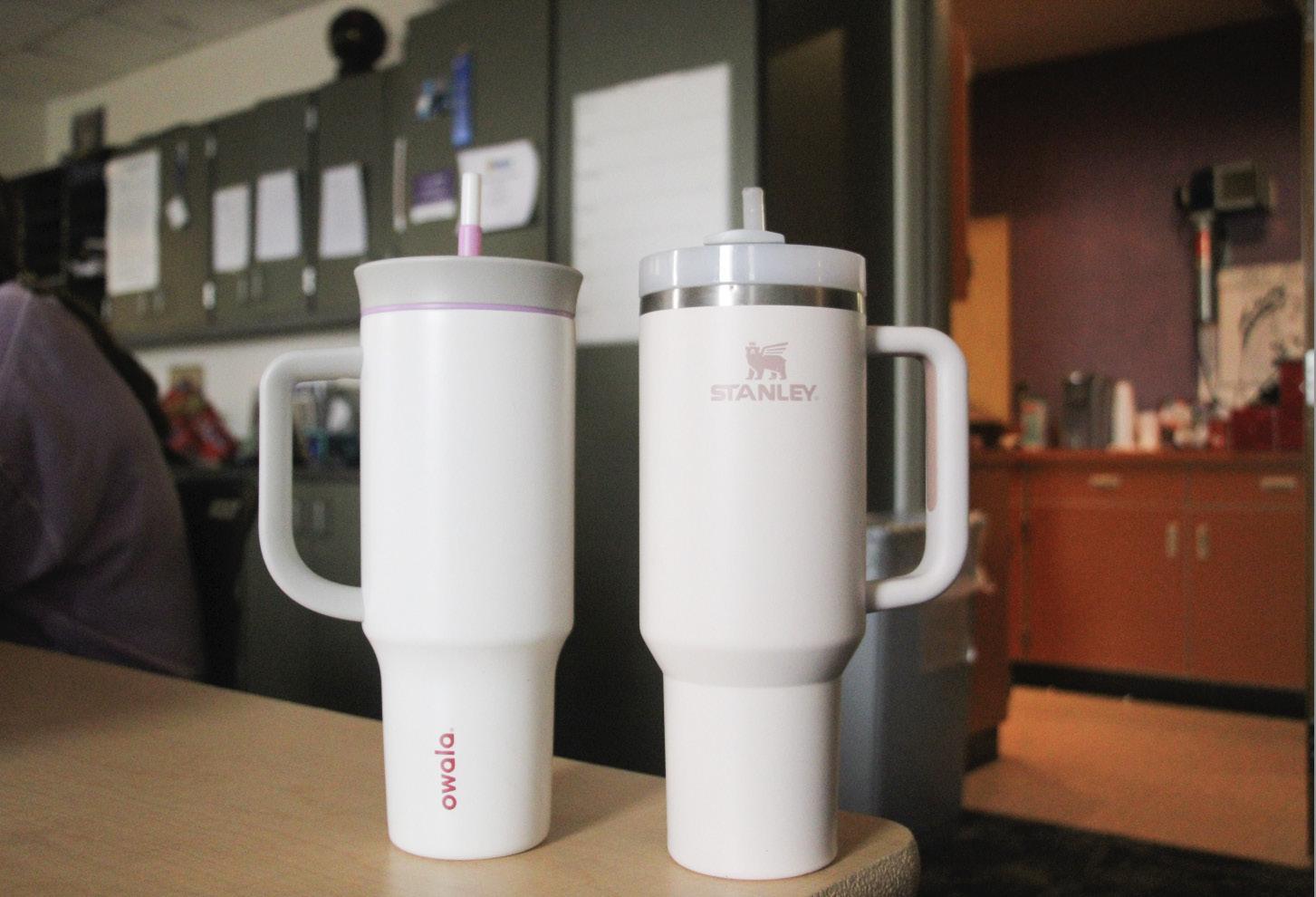
Recycling, stainless steel can take anywhere from 100 to over 1,000 years to decompose, while PET (plastic) water bottles take about 450 years to do so. Since stainless steel takes a while to decompose, the collection of Stanley tumblers, along with other water bottles that are currently being promoted, may be doing more harm than good.
Using one stainless steel water bottle daily in place of plastic bottles should eventually offset the length the bottle will take to decompose, but collecting stainless steel products is different. Many of the water bottles in
consumers’ collections only get used a few times, as there are too many to use on a daily basis. This makes offsetting the environmental harm of buying reusable water bottles more difficult.
While both Thorpe and Ruckman’s water bottle purchases were influenced by TikTok, their motivations for buying the products differed.
“It’s good for the environment to kind of keep the plastic water bottles out,” Thorpe said. “But also, if you have a water bottle and it’s a really pretty color, then I will for sure buy it.”
Ruckman said she isn’t necessarily motivated by possible environmental
Left: Stanley water bottles can be found in numerous classrooms around the school.
Below: Although reusable water bottles are an environmentally friendly alternative to their plastic counterparts, large collections can still harm the planet.

benefits, but like Thorpe, she is inclined to buy a water bottle if there are color options.
“I like a water bottle that can match my outfits,” Ruckman said.
Recently, the BVN halls have been covered in Stanley water bottles as the trend rises.
“I honestly think [the popularization of water bottles] is so funny because it’s such a random thing to be obsessed with,” Ruckman said.

Most popular water bottle brands from 2006 to now, according to Spoon University.

An early look into the challenges and events coming in the second semester.
By Emmett AbarThe preparations for graduation, spring break trips and beautiful spring weather; AP exams, final grades and stress brought by the pressure to finish strong. The second semester of each year has highs and lows, presenting unique challenges for each grade.
Entering into high school, freshmen have no idea what to expect in their second semester. They can only go off of the advice they pick up from upperclassmen and teachers. Freshman Ryan Huska has been going into second semester with an open mind and is prepared for it to get more difficult.
“It’s been going pretty smoothly, but I know it’ll get harder later in the year with AP testing,” Huska said. “I think just prepping for next year has been, and will be, a bit weird.”
Even though the second semester just started, it has offered opportunities for older students to teach Huska how to approach his studies while preventing burnout. The secret, he learned, is timing.
“Just taking it slow and make sure you’re not overloading yourself, and don’t get too stressed about something,” Huska said. “But as long as you remember that, you’ll be good.”
Although a lot is to come in the next couple of months, Huska is focused on the finish line.
“It feels like it’s getting closer to the end of the year,” Huska said. “I think there’s just this feeling it’s kind of coming to an end, besides testing and other stuff … I think it’s just nice to know that you’ve made it halfway and are almost done.”
Already having a completed second semester under their belt, sophomores
have an advantage this semester. While they have an increased workload from freshman year, sophomore Kyle Toal said he has more to look forward to as a balance.
“It’s going well so far,” Toal said. “Classes are going well, baseball is starting up, so overall, off to a strong start. Two main things I’m looking forward to are debate forensics and baseball, [in which] I’m looking forward to a fun season.”
Using his experience from last year, Toal decided to focus on maintaining his progress and being consistent in his classes. With that strategy in mind, Toal said he’s confident for what’s to come.
“I’ll probably try to procrastinate less because that’s something that tended to happen [last year] that I need to just kind of stop doing,” Toal said. “I know my classes are probably
going to get a little bit harder, so I’ll have to put in more work in general. But overall, I don’t think there’s going to be many changes.”
Toal’s advice from upperclassmen gave insight into how to stay motivated on extracurriculars in addition to his schoolwork.
“Make sure that you’re focused on what you want to do, and make sure you’re doing it for personal reasons, rather than just the idea that you have to do it,” Toal said. “If you have that mindset, then you’re gonna lose interest in that subject.”
Toal has also spent time preparing for some of the stressors he expects in the future.
“[To prepare for next year], I’m starting to do standardized testing prep and studying for that,” Toal said. “I’m a little bit worried about the [junior year] workload because I’ve heard it’s quite a bit, but it should be fine.”
Junior year is a pivotal year. Some students feel like they can’t screw up and start to face the pressure of getting ready for college applications. With that in mind, junior Cherry Yu said the second semester is more challenging than the first because her schedule is full of difficult classes.
“As a junior, I’m taking pretty hard classes, so [second semester] just consists of a lot of new subjects and topics,” Yu said. “In the classes I’m taking, first semester was primarily just a review of everything, and second semester is completely new material, so I think it’s really important to focus, pay attention and really understand what’s going on.”
Her experience during the last two years has given Yu insight into what skills are most important for a successful second semester.
“Time management is definitely the most important one,” Yu said. “You really need it for second semester, and in first semester, you want to get a good understanding of how certain teachers like to teach because once you understand that, that’ll really help set you up for second semester.”
Although Yu has heard how notoriously stressful junior year can be, she said she’s feeling confident with the advice she’s received from previous upperclassmen.
“Just stay on top of everything and don’t worry about grades too much because a lot of people do care about their GPA, but in the end it really does not matter — I feel that’s really important,” Yu said.
While second semester can be challenging, Yu said she still has events, such as her spring soccer season, to look forward to and help with the stress.
“I would say, in terms of workload, second semester might be more, but I’d also say that spring is a lot more fun because there’s a lot more to look forward to,” Yu said. “You have spring break, there’s prom, there’s actually a lot more fun activities and you get to look forward to school getting out in the summer.”
As she begins her last semester in high school, senior Marisa Freeman said she is eager to graduate. Looking back on her previous years, Freeman said the advice given to her by her
older siblings and past upperclassmen was accurate.
“Honestly, it works out,” Freeman said. “My siblings, or any upperclassman, have told me it always works out in the end, and that it’s going to be okay. And it will.”
Freeman also has parting advice for underclassmen going into their second semester.
“For underclassmen, I would have to say it’s easier to drop a class than jump a class,” Freeman said. “I’ve taken hard classes I wanted to switch out of, but sometimes it’s better to suffer through it.”
Freeman reflected on her previous years and said a certain mentality is required to make it through the toughest parts of the year, especially in junior year.
“For juniors, I’d just say you’re going to get into college,” Freeman said. “Trust me, you’re going to get in somewhere. You just have to trust the process, so don’t miss out on second semester because you’re stressing about grades.”
Although this is her last semester, Freeman said she still finds second semester challenging due to the stress of planning her next steps after graduation.
“[For seniors,] second semester is definitely harder because you have to apply to a bunch of colleges,” Freeman said. “Then you get to the point where it’s like, well, which college should I choose? It’s also very hard because of all the financial decisions and also finding [college] roommates.”

Eare supposed to congratulate and award those who have worked so hard to make incredible films throughout the year, but is that really the case?

Year after year, the academy has failed to reward films that have gone beyond just entertainment — films that make an impact and change the lives of those who watch it. Snubs like Christopher Nolan, Stephanie Hsu and “May December” are only the beginning of the disappointments that come from the award season. Yet even though the academy is not seen as the gold prize it once was, the event can still be incredibly fun and entertaining. Awful snubs and incredible wins make it what it is, and the community that is created around them is more than half the fun.
This year’s Academy Awards will happen on March 10, and the nominations list is full of surprises, missing many deserving nominees and hard to lose shoo-ins, like one of the most talked about films of the year: Greta Gerwig’s “Barbie.” More specifically, Greta Gerwig and Margot Robbie’s absence in the Best Director and Best Actress categories have caused reactions from Ryan Gosling to Hillary Clinton. Gerwig has previously proved both that she’s deserving of a nomination and her ability to write and direct an entire feature-length film that combines a doll and real-life problems in a natural and entertaining way.
Another hot topic related to “Barbie” is Ryan Gosling’s nomination, as many see it as a direct attack against Robbie, Gerwig and everything the movie stands for. Of course the movie about patriarchy
Sure, it’s a shame that Margot Robbie didn’t get nominated, but Lily Gladstone, lead actress of Martin Scorcese’s “Killers of the Flower Moon,” is the first Native American woman to ever be nominated for Best Actress. Gladstone’s win is so incredibly meaningful that film enjoyers should be focusing on her success rather than Robbie’s loss. A Native American nominee is a dream to have, but the academy missed out on highlighting other ethnicities in this year’s awards. Charles Melton and Greta Lee, lead actors in “May December” and “Past Lives,” both had outstanding performances that were nothing like they had ever done before in their career. After last year’s “Everything Everywhere All At Once” sweep, I was hoping to see more Asian actors represented.
Although an “Oppenheimer” sweep is expected, I’m rooting for particular underdogs that are just as deserving of winning as Nolan’s bigbudget film. Alexander Payne’s “The Holdovers,” which is nominated for five awards — including Best Picture, Actor in a Leading Role and Actress in a Supporting Role — feels like a warm blanket in a winter storm. While Paul Giammati’s Best Actor nomination is well deserved and feels like his best performance in years, Dominic Sessa’s lack of nomination feels like a personal attack. “The Holdovers” is such a warm and comforting film
and set matches not only what Stone’s character is feeling, but also what she’s learning about herself. “Poor Things” is uncomfortable in the best way possible. Mark Ruffalo’s performance felt like nothing he has ever done before, and his Actor in a Supporting Role nomination is incredibly well deserved. Even with its amazing sound design and cinematography, the film’s chance of getting overshadowed by “Oppenheimer” is what worries me most about this year’s Oscars.
The 2024 Academy Awards is going to be a whiplash of surprises and full of controversies. The successes of “Oppenheimer” and “Barbie” are almost guaranteed, and the inevitable losers will, in my opinion, be some of the worst snubs in history.
As the season starts to change, celebrate the warmer weather with this crossword. C R O S S W


1. American pasta dish, also the Spanish word for spring.
4. Feb. 10, 2024 was the first day of the new year on the _____ calendar.
6. The circumstances that make something possible, also one who was active on Mars for almost 15 years.
11. 2024 Best New Artist at the Grammys.
12. Prefix meaning new.
13. The class of 2027 this year.
14. Month of the U.S. presidential inauguration.
15. Full spectrum in the sky caused by the refraction of light through water droplets.
1. Greek goddess often associated with pomegranates.
2. The first flower to bloom in spring, symbolizing new beginnings.
3. This underground rodent predicts the beginning of spring.
5. When one is most likely to see a solar eclipse, also the second book of Stephenie Meyer’s “Twilight” series.
7. Known for rising from the ashes.
8. The second stage of metamorphosis.
9. Renaissance scientist better known for his paintings.
10. Popular flower on Feb.14.





The North Star is the official high school news publication of Blue Valley North High School, an open forum distributed to all the students four times a year. This is the February issue of volume 37. This issue of The North Star is published digitally through ISSUU and in print by Valley Print Logistics. This is a student publication and may contain controversial matter. Blue Valley School District No. 229 and its board members, officers and employees disclaim any responsibility for the content of this student publication; it is not an expression of School District Policy. Students and editors are solely responsible for the content of this student publication.